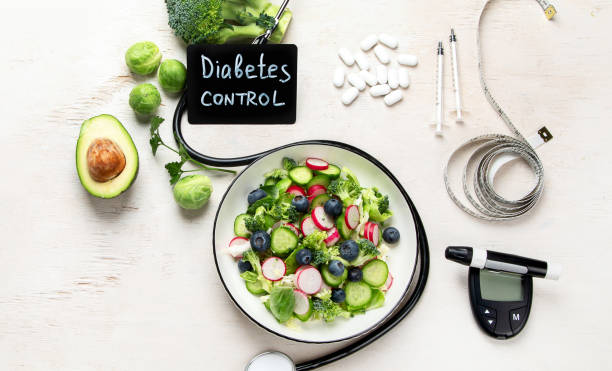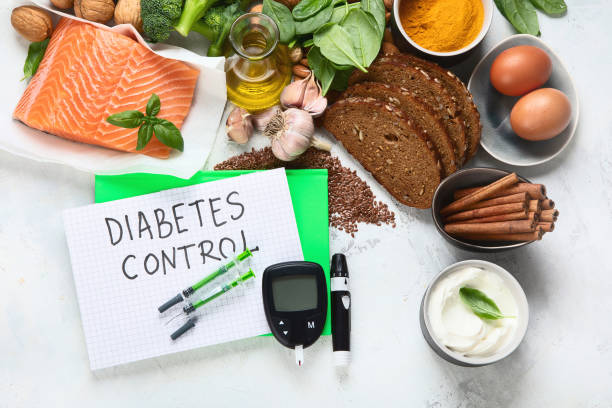Managing your blood sugar is an important part of staying healthy, especially if you have diabetes or prediabetes. When the levels are too high for too long, it can lead to serious health issues like heart disease, nerve damage, and kidney problems. The good news is that you can take steps to keep your levels in check. Simple changes to your daily routine can make a big difference.
In this guide, we’ll share easy and effective strategies for blood sugar control. You’ll learn how to make smart food choices, stay active, and build healthy habits. With these tips, you can manage your blood sugar and feel better every day.
Why Blood Sugar Control Matters
Before we dive into the best ways to manage your blood sugar, it’s important to know why it matters. When your blood sugar stays too high for too long, your body starts to have trouble using insulin properly. This is called insulin resistance, and it can lead to serious health problems, including:
- Heart disease
- Kidney damage
- Nerve damage
- Vision problems
Keeping your levels within a healthy range helps prevent these issues. It also boosts your energy, improves your mood, and supports your overall well-being. Staying in control of your levels is a key step toward living a longer, healthier life.

How to Control Blood Sugar: Simple Strategies
1. Follow a Balanced Diet
The food you eat has a big impact on your blood sugar levels. Eating a balanced diet helps to keep your levels steady throughout the day. Choosing the right foods can make it easier to manage your levels and feel your best. Here are some simple tips to help you build a healthy plate:
Focus on Whole Grains
Whole grains are a smart choice for controling your levels. Foods like oats, brown rice, quinoa, and whole-wheat bread are packed with fiber. Fiber slows down how fast sugar enters your bloodstream, which helps keep your levels steady. Whole grains also have a lower glycemic index (GI) than refined grains, so they won’t cause quick spikes in blood sugar. Choosing whole grains over white bread, white rice, or sugary cereals is a simple way to support better management.
Include Lean Proteins
Adding lean proteins to your meals is a great way to help control yoour levels. Foods like chicken, turkey, tofu, eggs, and beans provide steady energy without causing blood sugar spikes. Unlike carbs, protein is digested slowly, which helps keep your levels stable. Including lean protein in each meal can also help you feel full longer and support muscle health.
Choose Non-Starchy Vegetables
Non-starchy vegetables are a smart choice for keeping your levels in check. Veggies like spinach, broccoli, cauliflower, cucumbers, and zucchini are low in both calories and carbohydrates. This means they won’t cause a spike in your blood sugar. They’re also rich in fiber, which helps slow digestion, and they provide important vitamins and minerals that support your overall health. Try to fill half your plate with non-starchy vegetables at each meal.
Eat Healthy Fats
Adding healthy fats to your meals can help support blood sugar control. Good sources include avocados, nuts, seeds, and olive oil. These fats don’t raise blood sugar and can actually help lower insulin resistance, which is an important part of managing diabetes and prediabetes. Healthy fats also keep you feeling full longer and support heart health. Try using olive oil for cooking or adding a handful of nuts as a snack.
Limit Sugary Foods
Cutting back on sugary foods is key to keeping your levels steady. Sweets like soda, candy, cookies, and cakes can cause quick spikes in blood sugar, which may lead to crashes later on. Instead of processed sugar, try natural sweeteners like stevia or use small amounts of honey or maple syrup. These options can help satisfy your sweet tooth without causing major changes in your blood sugar.
2. Exercise Regularly
Staying active is one of the best ways to manage your blood sugar. Regular exercise helps your body use insulin better, which brings your levels down. It also improves blood flow, boosts your energy, and strengthens your heart. Aim for at least 30 minutes of moderate activity most days of the week. Walking, biking, swimming, or dancing are all great ways to get moving and support your overall health.
Aim for Consistent Activity
You don’t need to run a marathon to see the benefits of exercise. Simple, moderate activities like walking, swimming, or biking can make a big difference in controlling blood sugar. These types of exercise help your body use insulin better and keep your levels steady. Try to get at least 30 minutes of physical activity on most days. Even short walks after meals can be helpful.
Incorporate Strength Training
Strength training is a great way to improve your insulin sensitivity. By building muscle through exercises like lifting weights or doing bodyweight workouts, your body becomes better at using sugar for energy. As you gain muscle mass, your metabolism speeds up, helping you manage blood sugar more effectively. Aim to include strength training exercises at least two to three times a week for the best results.
Try High-Intensity Interval Training (HIIT)
High-Intensity Interval Training (HIIT) is a great way to boost insulin sensitivity and lower blood sugar levels. HIIT workouts involve short bursts of intense exercise followed by brief rest periods. This form of exercise is not only efficient but also highly effective in managing blood sugar. HIIT can be especially beneficial for individuals with type 2 diabetes, as it helps the body use insulin more effectively. Aim for 20-30 minutes of HIIT a few times a week to experience the benefits.

Lifestyle Tips for Better Blood Sugar Control
3. Manage Stress
Chronic stress can have a big impact on your blood sugar levels. When you’re stressed, your body releases stress hormones like cortisol, which can cause your liver to produce more glucose. This leads to higher blood sugar levels. If stress lasts for a long time, it can also contribute to insulin resistance, making it harder for your body to manage it effectively. Finding ways to manage stress, such as through relaxation techniques or mindfulness, can help keep your levels stable.
Practice Relaxation Techniques
To effectively manage stress, consider practicing relaxation techniques such as deep breathing, meditation, or yoga. These activities can help lower the production of cortisol, the stress hormone that can raise blood sugar levels. Regular practice of relaxation techniques can not only help reduce stress but also improve your ability to control blood sugar over time. Incorporating just a few minutes of deep breathing or a short meditation session each day can make a big difference in your overall well-being.
4. Stay Hydrated
Drinking plenty of water is key to maintaining healthy blood sugar levels. When you’re properly hydrated, your kidneys work more efficiently to flush out excess sugar through your urine. Staying hydrated also helps your body stay balanced and supports overall health. Aim to drink at least 8 cups of water each day, and even more if you’re active or live in a hot climate. Keeping water on hand throughout the day can make it easier to meet your hydration goals.
5. Get Enough Sleep
Getting enough quality sleep is essential for blood sugar regulation. Poor sleep can affect how your body responds to insulin and make it harder to manage blood sugar levels. Aim for 7-9 hours of restful sleep each night to support your overall health. Establishing good sleep habits, such as avoiding screens before bedtime and sticking to a consistent sleep schedule, can significantly improve the quality of your sleep. A well-rested body is better equipped to keep the levels balanced and boost your overall well-being.
6. Monitor Your Blood Sugar
Regularly checking your blood sugar levels is an important step in managing your health. Using a blood glucose meter, you can monitor your levels at different times throughout the day. This allows you to see how various factors—such as the foods you eat, your physical activity, and stress levels—impact your blood sugar. By staying informed about your levels, you can make adjustments to your diet, exercise routine, and stress management techniques to keep your blood sugar under control.

Foods That Help with Blood Sugar Control
Certain foods can support healthy blood sugar levels. Incorporate these foods into your diet to help manage:
- Leafy Greens: Spinach, kale, and other leafy greens are low in carbs and high in fiber.
- Nuts: Almonds, walnuts, and pistachios are rich in healthy fats, fiber, and protein.
- Berries: Blueberries, raspberries, and strawberries are high in antioxidants and fiber.
- Cinnamon: Studies suggest that cinnamon may help improve insulin sensitivity.
- Chia Seeds: These tiny seeds are full of fiber and healthy omega-3 fatty acids, which help stabilize blood sugar.
The Importance of Consistency
Managing blood sugar is a long-term commitment. It’s important to stay consistent with your healthy habits, whether it’s eating a balanced diet, exercising regularly, or managing stress. Small, consistent changes can lead to lasting improvements in your health and help you maintain healthy levels over time.
Conclusion: Take Control of Your Blood Sugar Today
Managing your blood sugar doesn’t have to be difficult. With the right diet, exercise, and lifestyle habits, you can take control of your health and avoid the complications of high blood sugar. Start by incorporating some of the strategies we’ve discussed, and remember that every positive change, no matter how small, can make a difference.
Have you tried any of these strategies for blood sugar control? What has worked best for you? Share your thoughts and experiences in the comments below. Let’s continue the conversation and help each other stay healthy!

